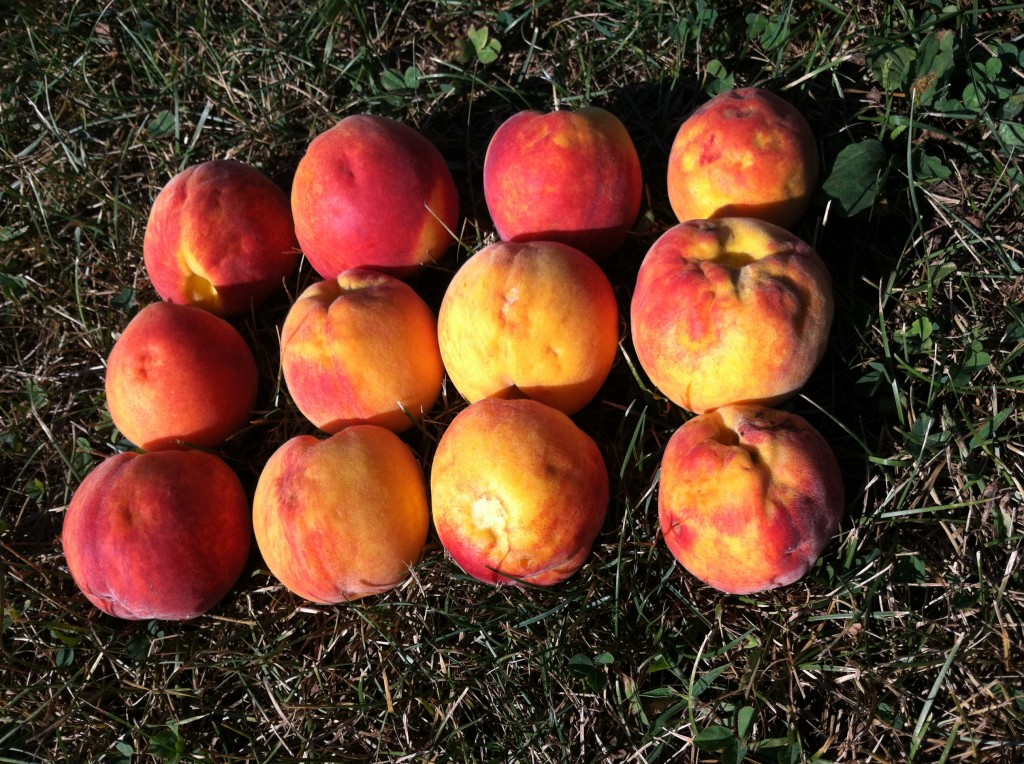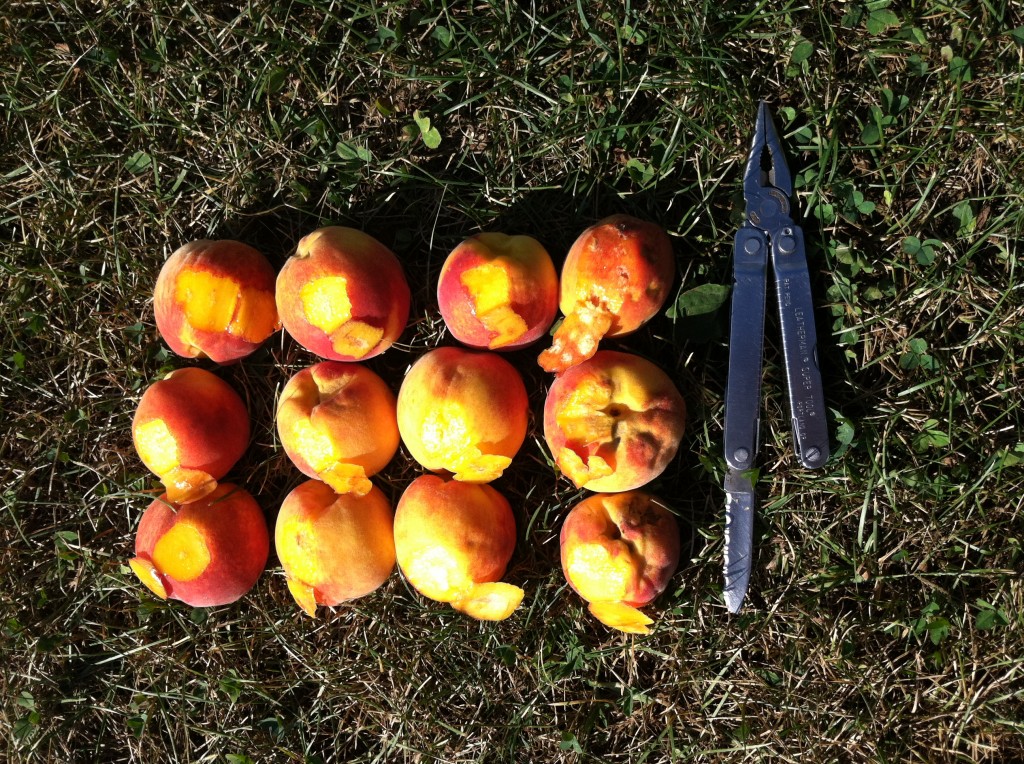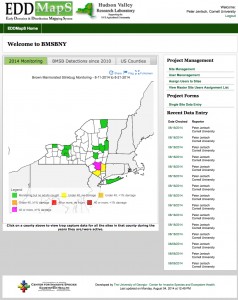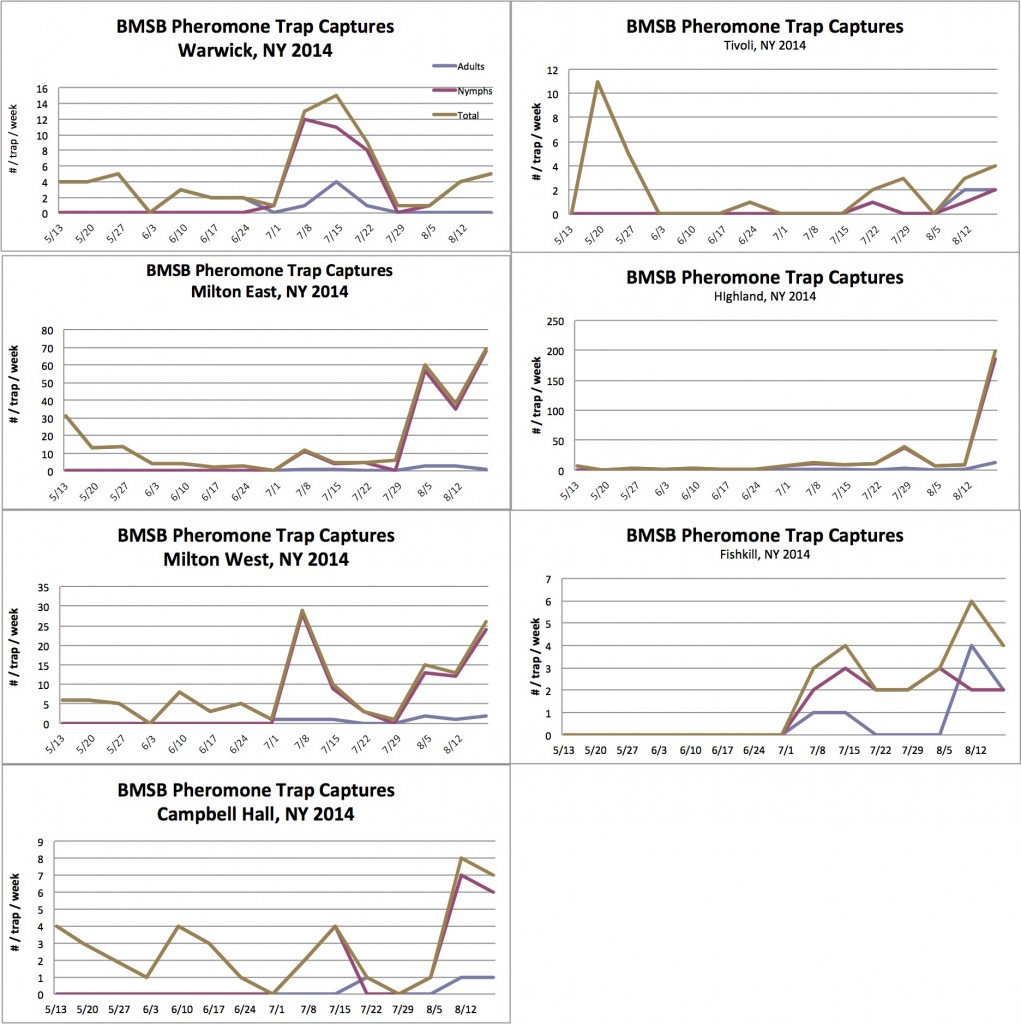 Extensive damage from the the Brown Marmorated Stink Bug (BMSB) observed on peach this week in Highland, NY. Lower levels of injury to Ginger Gold fruit has also been observed with green depressions and feeding tubes evident.
Extensive damage from the the Brown Marmorated Stink Bug (BMSB) observed on peach this week in Highland, NY. Lower levels of injury to Ginger Gold fruit has also been observed with green depressions and feeding tubes evident.
Over the past two weeks we have been seeing a dramatic increase of late instar BMSB nymph movement to pheromone baited Tedders traps at two of our monitored sites, Milton-East and Highland. In a peach orchard with mixed varieties, feeding injury to peach has exceeded 20%. As harvest of peach continue fewer peach remain, intensifying the feeding injury on later season fruit. Cat facing injury to fruit from BMSB feeding is now very obvious, with white corking beneath the skin.
When BMSB fruit injury is observed intensive scouting should be conducted. If BMSB is observed applications for management of BMSB should be made at the first available window using one of the most effective insecticides that will best fit your harvest schedule.



The list of the most effective insecticides for BMSB management is found above. NYS labeled insecticides effective for use against the BMSB are available in four major classes including pre-mix formulations. Danitol is likely to be the best choice this time of year . It is not as effective as Bifenthrin, however, it’s a very good choice for management of BMSB in peach as it has a 3-day PHI, strong efficacy, especially as a knock down insecticide, and works well against the native stink bugs and BMSB.

Bifenthrin did receive an emergency exemption use permit (Section 18) to control brown marmorated stink bug (BMSB) on apples, peaches, and nectarines in Orange, Dutchess and Ulster Counties of NY. Products include Bifenthure and Brigade, showing the greatest degree of efficacy of the pyrethroid group. However, bifenthrin has a 30d re-application interval, a 14d PHI and 12h REI, which will limit its use near harvest.


